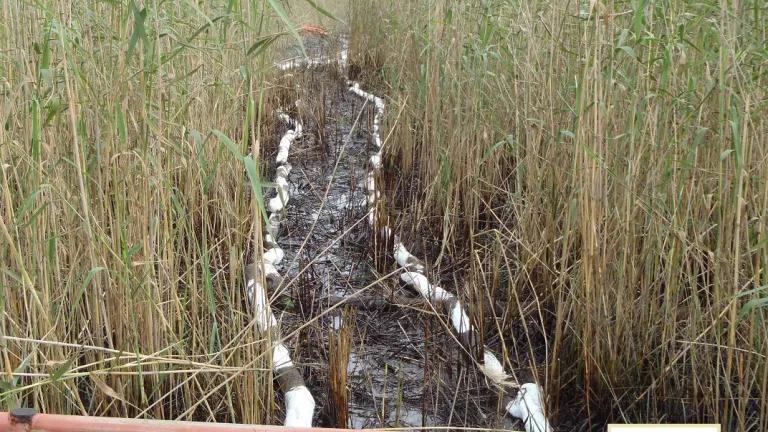In Attack on Climate,Trump Guts Protections for Refuges

This month the Department of Interior (DOI) rightly celebrated the 114th anniversary of the creation of the National Wildlife Refuge System. Thanks to the foresight and vision of a number of key conservationists, along with the support of President Teddy Roosevelt, the United States formally established a framework that emphasized the vital importance of protecting wildlife and their habitat. Since those beginnings, the U.S. Fish and Wildlife Service (FWS), which manages the refuge system, has overseen what has become arguably the cornerstone of America’s conservation system. There are refuges in every state, entailing “more than 850 million acres, including seven national monuments, 566 national wildlife refuges, and 38 wetlands management districts.”
To celebrate the anniversary of this remarkable system, Secretary of the Interior Ryan Zinke visited the National Bison Range in Moiese, Montana, and said, “Our wildlife refuges are an incredible asset to the national economy, bringing tourism and recreation jobs as well as revenue from spending in local communities. At the same time, refuges offer a place where families can carry on cherished outdoor traditions while making the important connection between people and nature.”
But a few days later that sentiment did not seem to register with President Trump when he instructed the Interior Department to rescind a rule designed to protect the Refuge System from destructive oil and gas drilling practices. The instruction was part of the much broader, destructive Executive Order calling a halt to progress on addressing climate change.
The rule in question, known in administrative terms as the Non-Federal Oil and Gas Development Within the National Wildlife Refuge System rule, was developed specifically to address antiquated 50- year-old regulations that failed to safeguard refuge lands and waters. An updated rule on drilling was necessary, in part, because preexisting private property rights grandfathered into the Refuge System allow some drilling, and many of those operations were taking advantage of outdated and lax regulations. Often these drillers abandoned their equipment, leaving the U.S taxpayer for the bill for the cleanup, costing the public millions
At last count, the Refuge System included over 5,000 oil and gas wells, with about 1,700 of those being active drilling operations on over 100 national wildlife refuges. In addition, the Refuge System is plagued by at least 450 unplugged and abandoned wells, many of which present an ongoing human and wildlife. The rescinded rule was aimed squarely at addressing such bad actors. Before the rule was finalized, the FWS documented far too many instances of drilling operations that leaked oil and other toxic drilling fluids directly into lakes and streams, impacting wildlife and habitat resources. But there was very little the agency could do to prevent the damage, or punish operations that abandoned their operations.
The rule Trump wants to rescind, which was adopted in December 2016, gives the FWS the ability to properly protect public lands and waters. The rule did not curtail the drilling of any preexisting operation that had the right to drill, but it was designed to ensure that the vague regulations that were previously in place were substantially updated. Key to these improvements was the adoption of adequate bonding and reclamation requirements. By requiring drillers to post an adequate bond, the rule provided additional guarantees that any costs associated with future cleanup would not be borne primarily by the public. Such requirements are widely used to safeguard other public lands throughout the country.
The new rule was not all that controversial when issued, although some in the oil and gas industry complained that the rule was regulating operations that technically occur on private lands. But the oil and gas activities being controlled were polluting adjacent public lands and waters while also harming the wildlife that depend on these resources. And the industry lacks credibility given that so many operations were documented by the FWS damaging the Refuge System. By attacking the rule, industry was essentially endorsing the notion that even the worst actors in their industry should be allowed to damage public lands and abandon their cleanup obligations when operations no longer proved to be viable.
By repealing an approach that focused on protecting wildlife, the administration is turning their back on future generations. Worse, the administration is recreating a rigged system that favors the fossil fuel industry above all other concerns, allowing toxic pollution that threatens human and wildlife health to continue. And all of this will continue to occur on our national wildlife refuges, a system that was conceived to protect wildlife exactly from these kinds of abuses.

